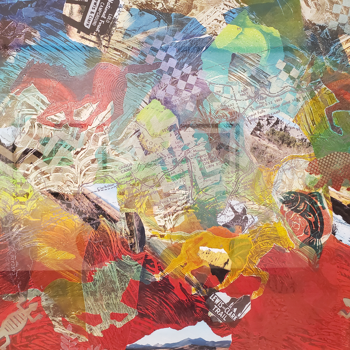The Silk Road
 Artwork by DALL·E
Artwork by DALL·E
i.
Silks are stacked like a physical rainbow, designs like Sanskrit on water, cool luminosity begging for a caress between thumb and finger. The Antico Setificio Fiorentino is hidden down a Florence alleyway behind heavy 18th century iron gates and open only by appointment to those who can afford it.
ii.
An online article from 2019 recounts the legend that, while caressing a caterpillar, a Chinese empress discovered that her finger was covered in silk filaments and, appreciating the material and its consistency, decided to devote her life to the production and processing of it.
iii.
In 1964, Anderson and Robertson’s, the last silk throwsters in Scotland, shut down its Motherwell factory.
iv.
New silk boxers run between 25 and 50 dollars a pair on Amazon, but these are mass-produced and not top of the line.
v.
At a current show at the Met, Kimono Style, there is a blue and beige kimono constructed out of a single bolt of silk from about a hundred years ago. Like boxer briefs, kimonos, until fairly recently, were worn by both commoners and aristocrats in Japan.
vi.
On a song from 1973, Detroit rocker Suzi Quatro screams, “The 48 crash is a silk sash bash!” And then, the following year, on her follow-up album, Quatro, “Right on, right on, right on, Savage Silk!”
vii.
Over a period of six years, several engineers, designers, and architects collaborated with 6500 silkworms and one robot arm to create Silk Pavilion, a three-dimensional hanging sculpture at the MIT Media Lab.
viii.
In Richard Sobol’s The Story of Silk, he writes that “in order to unwind the silk thread from the cocoons, the life cycle of the worm must end,” a rather innocuous way of saying that they must be boiled alive.





